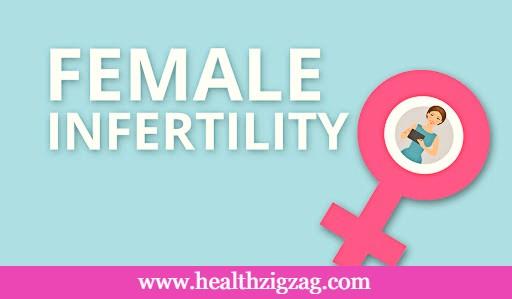
Contents [show]
There are a lot of people who are having trouble conceiving. According to statistics, ten to fifteen percent of couples in the U.S. experience fertility problems. Infertility is an inability to get pregnant despite having unprotected sex for a year. Infertility might be caused by a combination of different factors that interfere with pregnancy. Luckily, there are lots of safe and effective therapies that can boost the chances of getting pregnant. The most obvious symptom of fertility issues is an inability to get pregnant. Along with these symptoms, other things might occur such as irregular menstrual periods or amenorrhea.
Causes of Infertility
Sometimes the problems that lead to infertility can be present at birth, and sometimes they occur later in life. The main causes of infertility are:
Primary ovarian insufficiency
It’s also called early menopause which occurs when the ovaries stop working at all and menstruation ends before the age of 40. Though the cause of primary ovarian insufficiency is oftentimes unknown, some things are linked to the condition such as certain genetic conditions like Turner syndrome or carriers of Fragile X syndrome, immune system diseases, and smoking.
Ovulation disorders
The condition affects the production of eggs from the ovaries. It can be caused by hormone-related disorders like polycystic ovary syndrome or hyperprolactinemia (is when your body produces too much prolactin—the hormone that stimulates breast milk production). Also, hyperthyroidism and hypothyroidism can provoke fertility problems. Other causes might include eating disorders, excessive exercise, injury, or tumors.
Fallopian tube damage or blockage
This issue is often triggered by inflammation of the fallopian tube known as salpingitis. It can be caused by pelvic inflammatory disease, which is provoked by endometriosis, sexually transmitted infection, or adhesions.
Endometriosis
Endometriosis is a mysterious condition that occurs for unknown reasons and it often impacts the function of the uterus, ovaries, and fallopian tubes which can result in infertility.
Uterine or cervical abnormalities
Abnormalities with the opening of the cervix, polyps in the uterus, the shape of the uterus, and uterine fibroids might lead to fertility issues due to the blockage of the fallopian tubes or interference with the implantation of the fertilized egg. In this case, doctors use surgical methods to eliminate the problem, however fibroids treatment can be non-surgical.
Pelvic adhesions
Pelvic adhesions are bands of scar tissue that bind organs after appendicitis, pelvic infection, or abdominal or pelvic surgery.
Cancer and its treatment
Some cancers especially female reproductive cancers often severely affect female fertility. Also, radiation and chemotherapy might cause infertility.
Other conditions
Health conditions linked to delayed puberty or amenorrhea like celiac disease, untreated diabetes, and certain autoimmune diseases like lupus, can negatively impact female fertility.
Diagnosis of Infertility
Before looking for the root cause of infertility, your healthcare provider works to understand your sexual habits and may make recommendations based on that. Some infertile couples might not have a specific cause of infertility.
Infertility evaluation might include uncomfortable procedures and there’s no guarantee—even after all the testing and counseling—that you’ll be able to get pregnant. Female fertility depends on the functioning of ovaries and releasing healthy eggs. The tract must let an egg pass into fallopian tubes and join with sperm for fertilization. The fertilized egg must get into the uterus and implant in the lining. Tests for female infertility are aimed to determine whether any of these processes are impaired. Other fertility tests might include:
Ovarian reserve testing
Ovarian reserve testing helps evaluate the quality and quantity of the eggs available for ovulation. This method is often combined with hormone testing early in the menstrual cycle.
Ovulation testing
A blood test measures your hormone levels to find out whether you’re ovulating.
Hysterosalpingography
Hysterosalpingography determines the condition of your fallopian tubes and your uterus to find out whether you have blockages or other issues.
Imaging tests
Imaging tests involve pelvic ultrasound or hysterosonography which can help recognize uterine or fallopian tube disease.
Laparoscopy
This method might identify scarring, endometriosis, blockages, and irregularities of the fallopian tubes, and issues related to the ovaries and uterus.
Genetic testing
Genetic testing helps identify genetic defects that can lead to infertility.
Remember that not everyone needs to have all of these tests or even many of them. Your doctor will decide which tests you need.
Risk factors
Some risk factors can negatively affect your fertility. These include:
- Smoking. Smoking tobacco or marijuana can lower the chances to get pregnant. It can also lower the effectiveness of fertility treatment.
- Age. Age is probably the main risk factor since fertility gradually decreases with age, particularly in the mid-30s, and it drops rapidly after age 37.
- Weight problems. Being overweight as well as being underweight can increase your risk for infertility due to hormone imbalance.
- Alcohol consumption. Alcohol consumption even in moderate doses can affect the ability to get pregnant. Therefore, it’s better to avoid alcohol when planning a pregnancy. Also, alcohol consumption increases the risk of different birth defects.
Treatment of Infertility
Infertility treatment usually depends on the duration and cause of infertility, as well as your age. Infertility treatment might include significant financial, physical, psychological, and time commitments. Though a woman might need just one or two therapies to restore fertility, certain types of treatment might be needed before a woman can conceive. If you suspect fertility issues, consult a fertility doctor who will find out the root cause of your problem and choose the best therapy for you.




